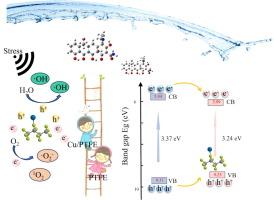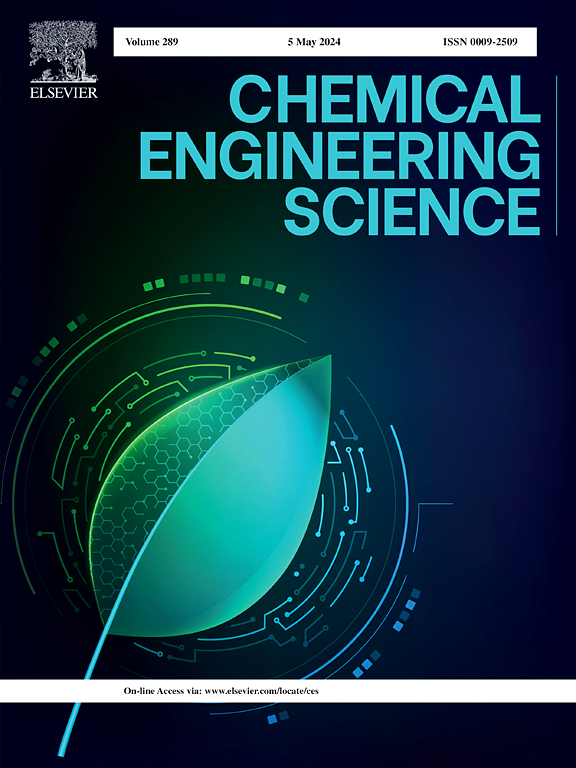IF 4.1
2区 工程技术
Q2 ENGINEERING, CHEMICAL
引用次数: 0
摘要
压电催化已成为去除废水中有机污染物的一种高效策略。虽然聚四氟乙烯(PTFE)的压电特性已得到证实,但在 PTFE 上开发高效电荷转移通道以提高其压电催化活性仍是一项重大挑战。在本研究中,我们通过球磨合成了一种 CuCl2/PTFE 压电催化剂。优化后的 CuCl2/PTFE 对四环素的降解率为 92.1%,动力学常数为 0.62 min-1。CuCl2/PTFE 催化剂的动力学常数是 PTFE 的 4.97 倍。结合密度泛函理论(DFT)计算,我们提出了一种合理的压电催化降解机制。CuCl2 的掺杂降低了 PTFE 的能带结构,促进了 e- 和 h+ 的分离,进一步产生了 ∙O2-、1O2 和 ∙OH 参与抗生素的降解。这项工作为压电催化在环境修复和清洁能源生产中的应用提供了宝贵的理论启示。本文章由计算机程序翻译,如有差异,请以英文原文为准。

Synthesis of CuCl2/PTFE with high piezoelectric effects for efficient degradation of antibiotics: Radical mechanism investigation
Piezoelectric catalysis has emerged as a highly effective strategy for the removal of organic pollutants from wastewater. Although the piezoelectric properties of polytetrafluoroethylene (PTFE) are well-established, the development of efficient charge transfer channels on PTFE to enhance its piezoelectric catalytic activity remains a significant challenge. In this study, we synthesized a CuCl2/PTFE piezoelectric catalyst via ball milling. The optimized CuCl2/PTFE degradation rate of tetracycline was 92.1 %, and the kinetic constant was 0.62 min−1. The CuCl2/PTFE catalyst with a kinetic constant 4.97 times higher than PTFE. Combined with density functional theory (DFT) calculations, we propose a plausible piezoelectric catalytic degradation mechanism. The doping of CuCl2 reduces the band structure of PTFE and promotes the separation of e− and h+, further producing ∙O2−, 1O2 and ∙OH to participate in the degradation of antibiotics. This work provides valuable theoretical insights for the application of piezoelectric catalysis in environmental remediation and clean energy production.
求助全文
通过发布文献求助,成功后即可免费获取论文全文。
去求助
来源期刊

Chemical Engineering Science
工程技术-工程:化工
CiteScore
7.50
自引率
8.50%
发文量
1025
审稿时长
50 days
期刊介绍:
Chemical engineering enables the transformation of natural resources and energy into useful products for society. It draws on and applies natural sciences, mathematics and economics, and has developed fundamental engineering science that underpins the discipline.
Chemical Engineering Science (CES) has been publishing papers on the fundamentals of chemical engineering since 1951. CES is the platform where the most significant advances in the discipline have ever since been published. Chemical Engineering Science has accompanied and sustained chemical engineering through its development into the vibrant and broad scientific discipline it is today.
 求助内容:
求助内容: 应助结果提醒方式:
应助结果提醒方式:


